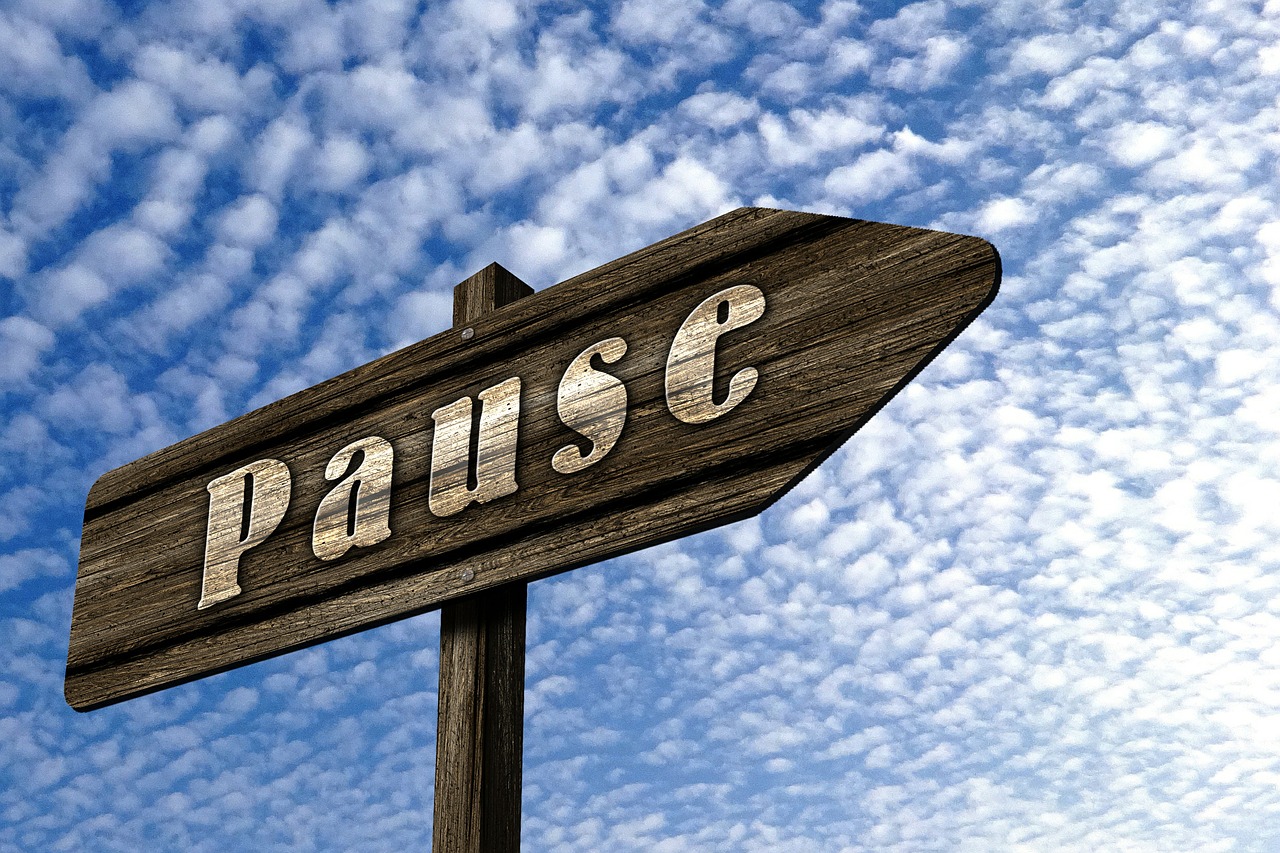In his book, Say What You Mean, Oren Jay Sofer writes, “If I could teach people only one tool for training in presence it would be to pause. The space of one pause can make a world of difference…The pause is pregnant with possibility. In one breath, we can notice thoughts, feelings, and impulses, and choose which ones to follow. It’s like a mini meditation, an infusion of presence to help stay clear and balanced.”
I agree with Sofer around the importance of the pause. I also agree with what Bruce Lee says: “We don’t rise to meet our expectations. We fall to our level of training.” And so, if I could offer one training at this time it would be just that: the sacred art of pausing.
The Space Offers Choice
Human beings have often been referred to as “human doings” because of our ridiculous pace and over-busy lifestyle. For this reason, many people sincerely believe and assert that there is simply no space between a stimulus and a response. They are certain that the two are enmeshed and that impulsive behaviors follow triggers without choice.
I wholeheartedly disagree with this assertion and, instead, agree with Viktor Frankl who wrote in his book Man’s Search for Meaning, “Between stimulus and response there is a space. In that space is our power to choose our response.”
Reclaim Your Power
For 14 months now, in the midst of this global pandemic, many of us have felt gripped by uncertainty, anxiety, and powerlessness due to a lack of control. Becoming mindful and remembering to pause creates space that allows us to reclaim our power and be more in control.
As society slowly begins to re-open and re-normalize, we will need some help navigating our way through. It will be messy and confusing in moments and most likely we will want and need to use the invaluable pause.
Pausing to Breathe
There are various ways to create a pause, but the simplest by far is to take a deep, audible inbreath and outbreath. Not only does this immediately calm the nervous system, but it offers space to notice whatever is arising and to consciously choose a different response.
When someone yells at us, we oftentimes feel triggered and yell back. We are conditioned to meet fight with fight and to battle back. It’s the basis of most arguments. The pause, however, allows us to try something different—to slow things down and adjust body, mind, and/or behavior. American psychologist and meditation teacher Tara Brach says that the pause offers the space for a “U-Turn.”
Pausing Options
The pause is flexible and can vary in length depending on the circumstance. It can also be internally or externally directed. It can be used as a self-care practice to slow things down and “self-regulate” and can be as brief as taking one or two deep breaths. Pausing can also be used as a relational practice to slow the pace of a conversation and “co-regulate.” Sometimes all that is needed is a micropause, which has been defined by Sofer as “an almost imperceptible gap in the flow of speech.” Other times, you may request a longer pause, either a non-verbal or verbal one.
Here are some specific ways that Sofer offers to create a verbal pause during a difficult conversation:
- “I’m not sure. I’d like to think about that.”
- “Can we pause for a moment? I want to gather my thoughts.”
- “I’d really like to consider this more carefully. Can I get back to you on it?”
The Hardest Part is Remembering to Practice
The power of the pause has been scientifically proven—it calms the nervous system. For this reason, it is also very helpful to pause and check-in with yourself periodically throughout the day, to stay balanced and regulated.
But the hardest part about building new practices is actually remembering to use them. Personally, I love post-it notes and posters and find it helpful to adorn my house with visual reminders, such as an image of a U-Turn with the word PAUSE in all caps below it. I encourage my clients to get creative and even artistic when customizing their own visual cues. Or you may prefer to set timers on your phone for regular check-ins.
Consider even creating code words with your loved ones that will act as reminders when you begin to sense the energy shifting and reactivity building. Feel free to experiment and even have some fun with it.
What matters most is that we remember to use our tools, not when or how we remember.
A World of Difference
When you experience the power of the pause in real time, it’s almost magical. In the middle of a heated discussion, when things are feeling emotionally charged and far too intense, you can shift the energy by pausing. Taking just one or two deep breaths or literally requesting a pause in a conversation can shift the trajectory of an entire situation. When you create some space and distance, the moments can unfold in surprisingly new ways, and you can effectively manage your reactivity.
Yes, the pause is “pregnant with possibility” and “can make a world of difference.” Whatever the scenario, if you choose not to battle back, the argument may never even happen. The anger and resentment may not have a chance to fester. Instead, you may find access to empathy and/or compassion for the other person as well as for yourself.
Remembering to pause and breathe helps you to stay grounded and balanced so you can be more skillful, kind, and resourceful in your responses.
Sincerely,
Coach Terri






0 Comments